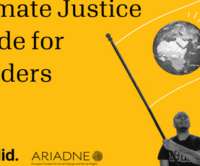Getting from “no” to “yes” for climate justice
Candid
JUNE 16, 2022
A philanthropy insider once shared during a presentation that foundations develop guidelines so they know to whom to say “no.” The experience has also shown us that, when pressed, philanthropy can flex its guidelines and meet the moment to address urgent need. . Though it sounded cynical and harsh, it also rang true.












Let's personalize your content